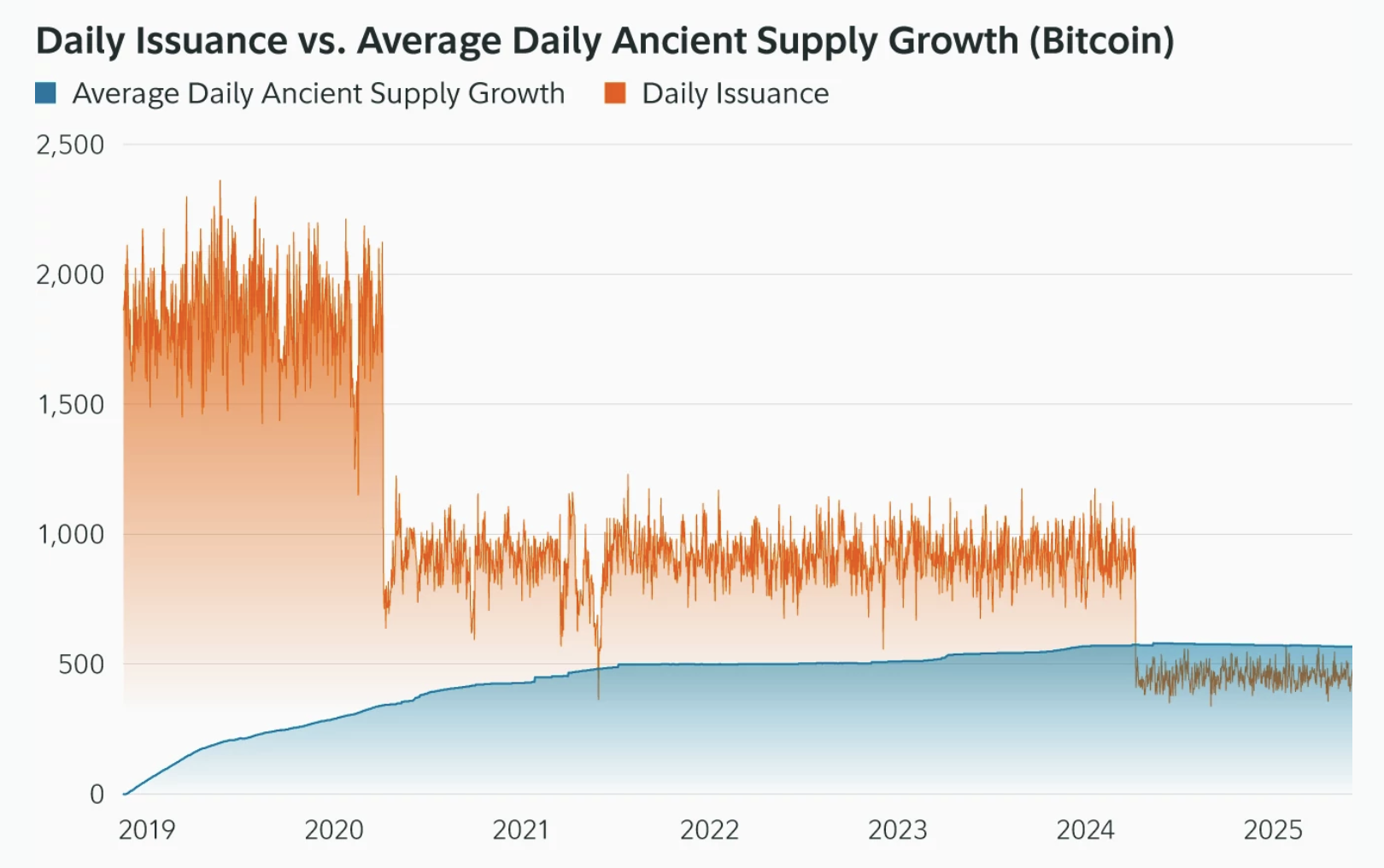According to a new report from Fidelity, 17% of all Bitcoin is officially classified as "ancient Bitcoin", meaning it has not moved for at least 10 years. These assets are worth approximately $360 billion.
Fidelity claims that more Bitcoin is becoming ancient each day, and new miners cannot replace it. This trend and corporate acquisitions could threaten Bitcoin's function as a circulating currency.
Ancient Bitcoin Taking Over?
Thanks to the HODLing trend, Bitcoin is not short of whales who hold assets for a long time.
However, the cryptocurrency industry is now over 15 years old, and the number of "ancient" tokens can only continue to increase. Fidelity has drawn important conclusions through its research.
As of June 8, 17% of all bitcoin falls into the category of "ancient supply"—meaning these coins have not moved in a decade or more. What could this mean for scarcity, market dynamics, and investors' conviction? Find our team's thoughts: https://t.co/EALzrfS92c pic.twitter.com/Ckm3MylTLY
— Fidelity Digital Assets (@DigitalAssets) June 18, 2025
As a major Bitcoin ETF issuer, Fidelity has a strong interest in conducting this research. The claim that 17% of all Bitcoin has become ancient is very noteworthy.
The company estimates that 3.4 million BTC fall into this category, representing a value of over $360 billion. However, Fidelity's findings about mining could have an even more significant meaning.

In particular, the company claimed that more Bitcoin is becoming ancient each day, more than new tokens being mined. The mining industry is becoming increasingly less profitable, and ETF issuers are purchasing far more BTC than miners can produce.
Fidelity stated that 566 tokens become ancient per day, while only 450 new tokens replace them.
Why the "Lost" Ancient Supply is a Major Concern
A critical concern is that some of the ancient supply is essentially lost due to discarded private keys or inaccessible wallets. On-chain data indicates that approximately 20% of already mined Bitcoin has been permanently lost.
Separately, over 1.8 million Bitcoin associated with Satoshi Nakamoto have remained dormant for over 10 years. When coins are truly lost, the circulating supply decreases, changing demand-supply dynamics.
Reduced active supply can increase price volatility. As Bitcoin's supply limit approaches, each removal from active circulation leads to tighter available liquidity.
Additionally, decreasing active coins increases concentration risk. With reduced active supply, whales can more easily move the market.




